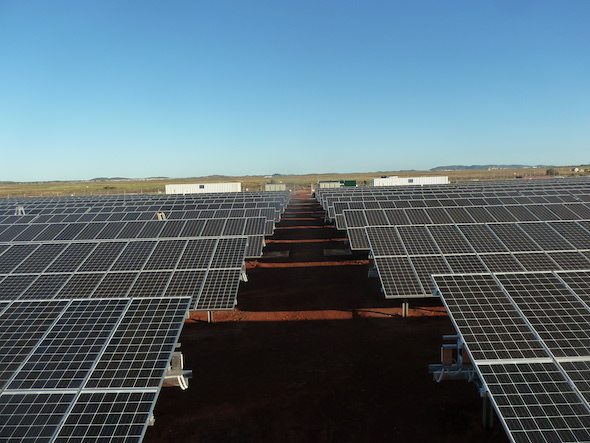One of Australia’s largest airport solar arrays – and the largest PV grid-connected project to use an Australian made and potentially “game-changing” cloud predictive technology – has been completed in Western Australia.
The $7.3 million, 1MW Karratha Solar Farm, which is sited next to the Karratha Airport south of Broome, was completed by SunEdison on Wednesday.

The ARENA-backed project ($2.3 million) will be owned and operated by Impact Investment Group’s IIG Solar Income Fund (Fund), which will sell its power to the City of Karratha, via a 21-year Power Purchase Agreement.
IIG’s Fund – an unlisted solar infrastructure investment vehicle launched in mid-2016 – is overseen by an independent board chaired by Ross Garnaut and boasts prominent investors including Future Super.
The output of the solar farm – estimated at around 1,824MWh in the first year of operation – is expected to supply nearly one-third of the airport’s electricity
The project is notable for its use of technology from a separate ARENA-backed project, Fulcrum3D’s CloudCAM solution – which uses a camera, irradiance sensor and data analytics to track clouds and optimise the amount of solar power produced at the airport.
The technology does this by predicting when clouds will block the sun’s energy from hitting the panels and cause a sudden drop in the power output. It avoids this by gradually reducing electricity output, allowing the solar farm to meet its obligations to the grid.
CloudCAM was developed through a separate $1.1 million project supported by $545,000 of ARENA funding. Fulcrum3D has completed its trial and is now focussed on selling its product domestically and internationally.
So far, the technology, in conjunction with battery storage, has saved more than 20 per cent in battery storage, significantly reducing Karratha Solar Farm’s construction cost and resource consumption.
ARENA CEO Ivor Frischknecht both the solar farm and the Cloud Predictive Technology demonstrated how his Agency was backing new technologies that demonstrate the benefits of renewable energy, especially in regional communities.
“Cloud prediction makes solar cheaper and more reliable while reducing the need for batteries. That’s what makes this project so exciting,” Frischknecht said.
“The technology is in its infancy. This is one of the first commercial trials in Australia and will be crucial for proving the technology’s feasibility.
“Combined with innovative control systems developed by MPower, the technology makes solar cheaper and reduces intermittency by giving the operators a clearer picture of the solar resource they can expect in the immediate future.
“As large-scale solar ramps up in Australia, spurred on by ARENA support, there will be more opportunities for cloud prediction technology to work alongside solar farms and ultimately accelerate the deployment of solar across Australia,” he said.
“Insights from the operation of Karratha Airport Solar Farm will be made publically available and will focus on the performance of the cloud predictive technology.”
Frischknecht also said the Karratha Airport Solar Plant made a good case for more renewables to be connected to the North West Interconnected System (NWIS) – a “smaller network” that needs renewables to meet performance criteria.
“ARENA-supported projects like the Karratha Airport Solar Farm and CloudCAM are important for demonstrating to network owner and operator Horizon Power that solar can provide sustainable, reliable power into the NWIS without the need for large amounts of expensive battery storage,” he said.










